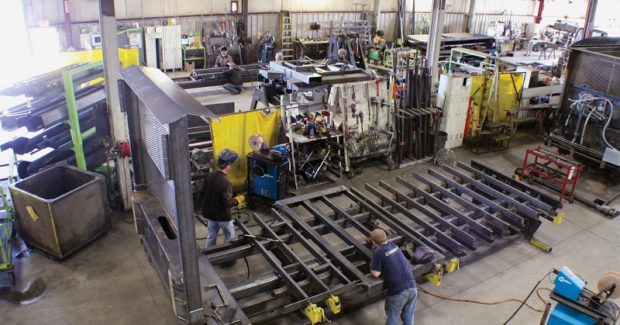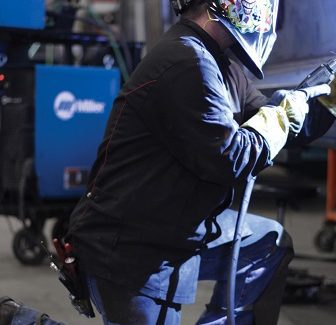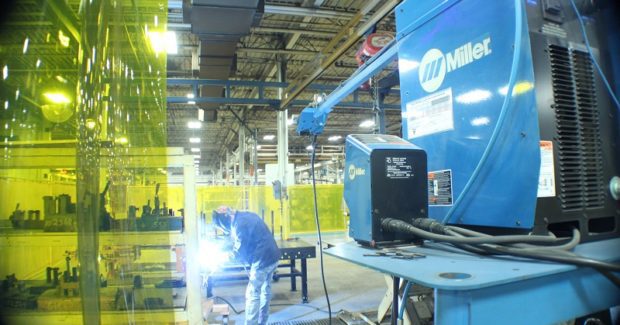Avoid These Costly Mistakes in the Welding Operation
Looking to improve productivity and reduce costs to be more competitive? The one key to getting ahead is reducing the time spent on non-value-added activities – i.e., any time spent not welding. Here are some of the best ways to reduce downtime.
Posted: May 23, 2017
Even mistakes that seem small can cost significant time and money in a welding operation, reducing productivity, increasing downtime and rework, and generating thousands of dollars a year in wasted consumables. As metal fabricators seek ways to be more competitive, avoiding common mistakes can provide an advantage. Consider some best practices to help improve quality and productivity, and positively impact the bottom line.
IMPROPER MACHINE SETUP
Improper machine setup or incorrect parameters for the application can lead to poor welding performance and issues, such as increased spatter or incomplete fusion. These, in turn, increase time and money spent on cleanup and rework. Whenever possible, have procedures in place that specify voltage and wire feed speed, or invest in technology that can guide the process. For example, some power sources offer welding processes with more forgiving operating windows and include pre-set welding parameters that remove the guesswork of setting up the machine. This makes it easier to produce high-quality welds, no matter the application or size of the welding operation. In addition, welding equipment distributors can provide guidance on the correct machine procedures and parameters for specific applications.
BAD CABLES OR CONNECTIONS
Loose cable connections or damaged cables can impact the quality of the welding arc. Damaged cables contribute to inconsistent weld quality by causing drops in voltage and ultimately reducing heat into the weld. Poor cable conditions or connections also increase spatter in the weld, resulting in more time and money spent on cleanup. Several factors can cause cable issues, including connections that aren’t properly tightened at setup, connections that loosen over time, or cable damage that occurs from daily abuse in a shop or on the jobsite. Regularly check cable connections and conditions, and replace worn or damaged cables as necessary.
IMPROPER GAS FLOW OR PRESSURE
Weld quality can be affected by improper flow or pressure of the shielding gas, which can occur when the gas level is turned up too high or when the gas lines to the machine are too long. Setting the gas pressure too high is a frequent occurrence in shops without air conditioning, where fans may be running to keep workers cool. Operators often turn up the gas level to compensate for fans blowing away the shielding gas. When gas levels are too high, it can cause additional spatter, incomplete fusion and an unstable welding arc. Gas pressure that is too low can also be a problem, causing weld defects because the weld pool isn’t properly shielded.
In addition, it’s important to keep the gas line as short as the application allows. The gas line typically extends from the gas supply to the wire feeder. If a hose is quite long, pressure can build up and inflate the hose when the operator is not welding. This excess pressure releases when the operator pulls the gun trigger, causing an unstable arc, spatter and porosity in the arc starts. The gas regulator, which helps ensure correct pressure, should also be located as close as possible to the feeder to help prevent a surge of gas. Issues with improper gas pressure or flow can increase costs in the welding operation due to increased spatter and welding defects that require added downtime for cleanup and rework. Also, the wasted gas incurred when there is improper gas flow or pressure can be a significant cost for a welding operation.
OVERLOOKING PREVENTIVE MAINTENANCE
Lastly, regular care and inspection of the consumables, welding gun and wire feeding system are important for optimal performance and productivity. Plan to conduct this maintenance during routine pauses in the welding operation to avoid additional downtime. Common maintenance steps include:
- Look for loose connections that can occur over time and tighten them as needed.
- Inspect for consumable wear and replace contact tips, gas diffusers and retaining heads as needed.
- Periodically clean out the liner with compressed air and track how long a liner typically lasts so that it can be replaced before problems occur.
Keep in mind that the type of consumables being used can play a role in product life. Choosing the least expensive consumables – while appealing up front – may result in premature wear, more downtime for changeover or problems with the weld in the long term.
AVOID MISTAKES TO SAVE TIME AND MONEY
In welding operations, mistakes can have a big impact on productivity and quality. Follow some best practices to avoid common and costly mistakes, and to help ensure optimal results. Best practices are still the bottom line: Increasing the time operators spend welding and reducing the amount spent on non-value-added activities (any time spent not welding) can help improve productivity and efficiency.


















